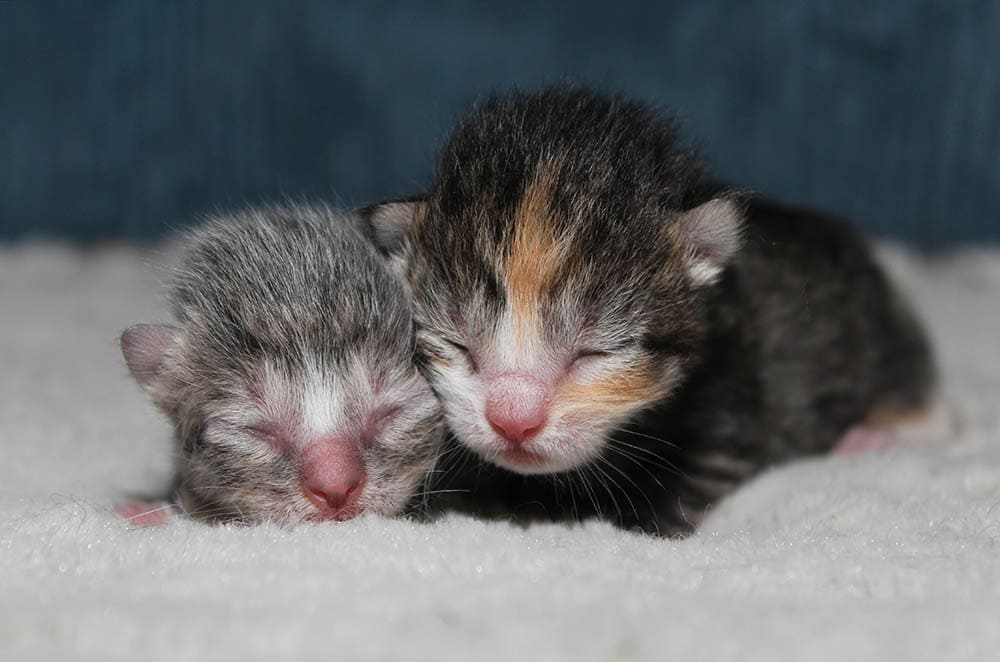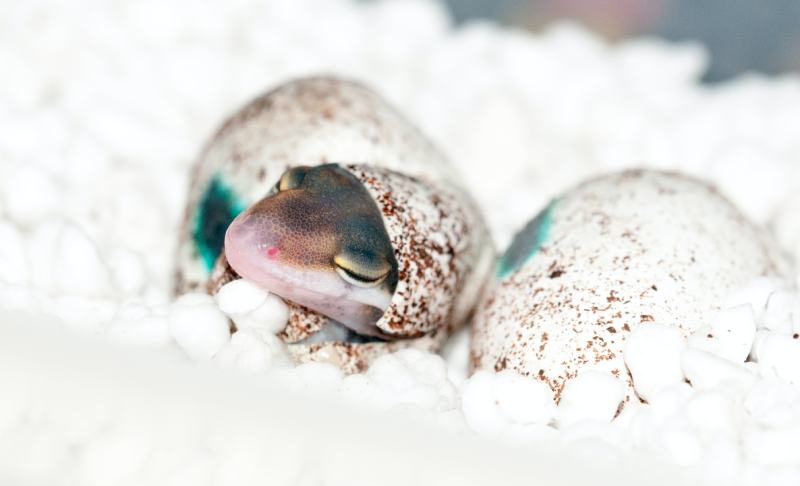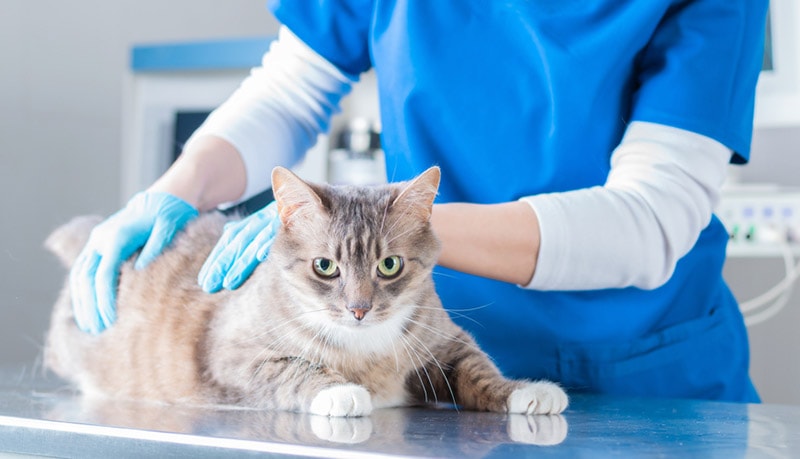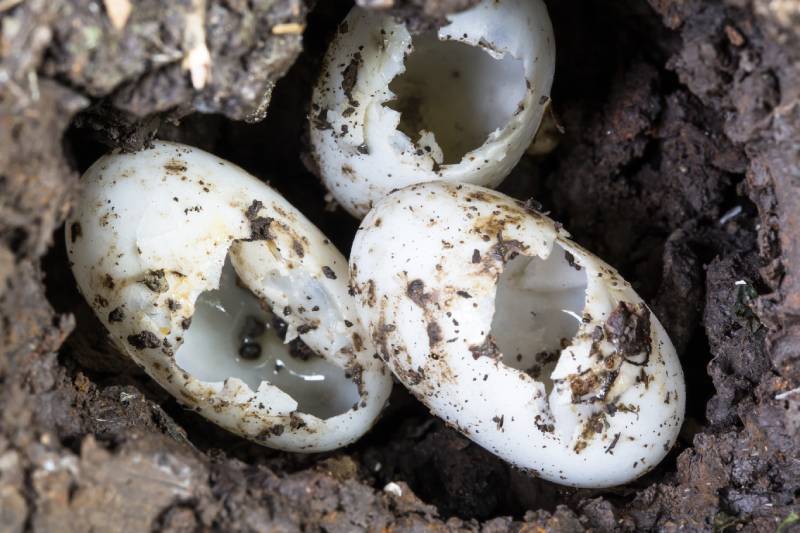VET APPROVED

The information is current and up-to-date in accordance with the latest veterinarian research.
Learn more »Click to Skip Ahead
Kittens are like tiny magic balls of joy. You see one, and your whole day lights up! But when do they start to see you and open their little eyes? Not before about 10 days of age! Moreover, they are born deaf and blind. Here, we bring some more facts about kitten development, their age at each stage, and the age-appropriate to adopt one of these endearing and mischievous little creatures!

The 15 Cornerstones of the Kitten Development
From birth to adulthood, the development of the kitten resembles ours. Here are the main cornerstones and events:
1. The Mother’s Antibodies Protect the Newborn Kitten
At birth, the kitten is immunized by colostrum, a liquid rich in antibodies that the mother cat secretes during the first few days after giving birth. This immunity lasts several weeks. Then, it is replaced by the action of the antibodies that the kitten makes on its own.
2. The Kitten Weighs About 3–4 Ounces at Birth
The kitten, barely out of its mother’s womb (after 2 months of gestation), weighs just over 3 ounces. The weight varies from one breed to another and according to the number of kittens in the litter: the more kittens there are, the lighter they are. They grow about 0.5 ounces per day from the first week, or around 4 ounces per week. At 6–7 months, they average between 4–8 pounds depending on the breed.
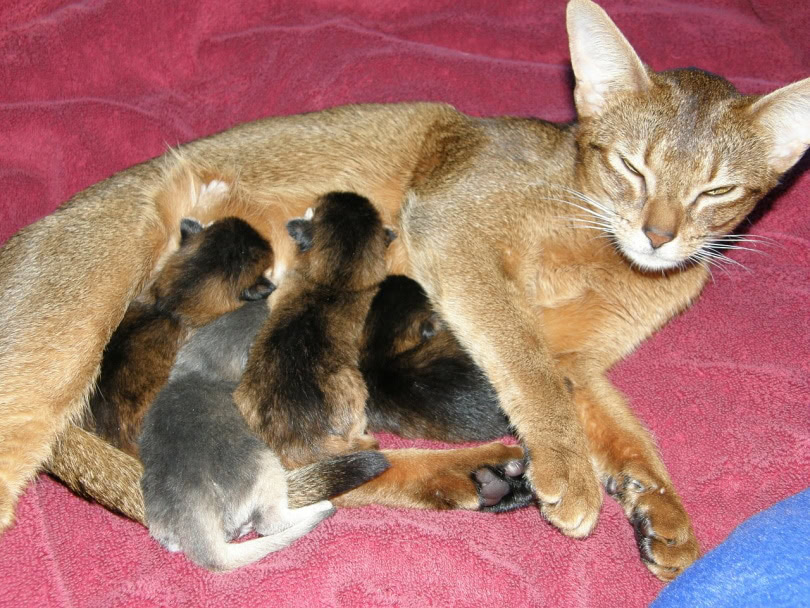
3. The Kitten Is Born Deaf and Blind
The newborn baby has no teeth. They have folded ears, closed eyes, and their claws are not yet retractable. Deaf and blind, they orient themselves through touch and, to a lesser extent, smell. Fortunately, they soon master how to crawl and find their mother’s mammary glands, which they can immediately suck thanks to a suckling reflex!
4. The Kitten Cannot Regulate Their Temperature
Until the age of 3 weeks, the kitten has very little subcutaneous fat. As a result, they are unable to regulate their body temperature on their own until around 5 weeks of age. Thus, their health and survival depend entirely on external heat sources. They orient themselves spontaneously towards hot bodies, like their mother and siblings, or towards an infrared ray lamp.
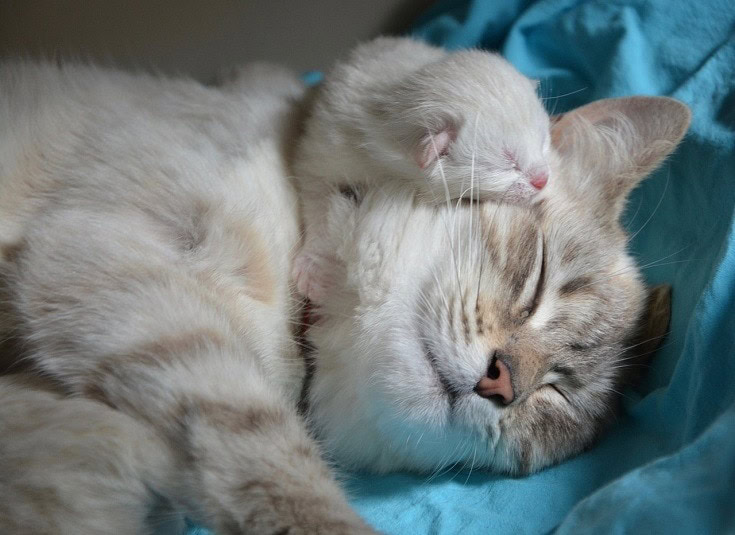
5. The Kitten Sleeps 20 Hours a Day
Like all babies, kittens sleep a lot, often curled up against their siblings. This sleep is essential because it allows for proper growth and development.
6. The Kitten First Has Gray or Blue Eyes
Regardless of breed, all kittens have gray or blue eyes until they are around 7 weeks old, when the melanocytes, the cells that produce pigment melanin, will be fully mature. It is only at this age that the pigments give the iris its final color, which can be blue, green, or even gold!
7. The Kitten Doesn’t Purr Right Away
From birth, the kitten cries out to call for their mother every time they feel hungry or distressed. Their vocal repertoire is still minimal compared to adults: they do not yet know how to purr, and this trait starts to develop a few days after birth! Fifteen days later or more, their vocal repertoire is enriched. They will gradually learn to purr, hiss or growl.
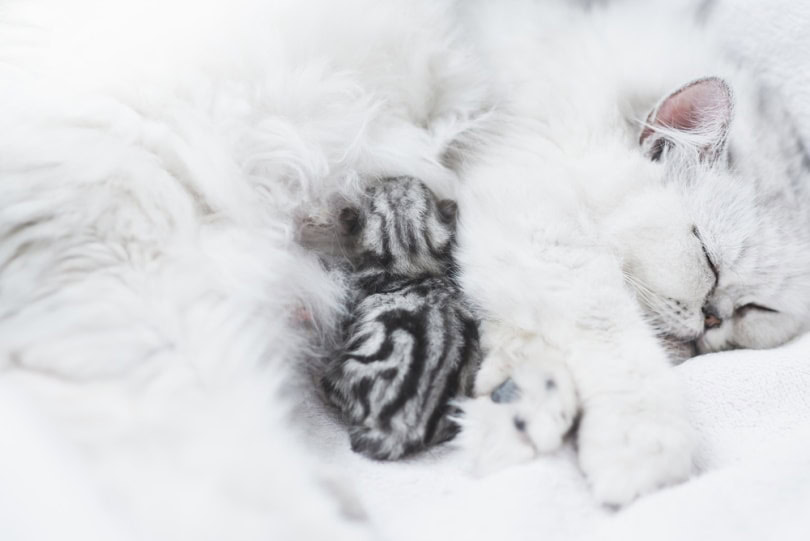
8. At 3 Weeks, the Kitten’s Senses Are Refined
Around the age of 15 to 21 days, their eyes are open, and their ears unfolded: the kitten enters a transition phase during which they can see and hear. Their sense of smell also improves during this period. A future predator, the kitten can now follow a scent.
9. The Kitten May Start Using the Litter Box Around 4–6 Weeks Old
Until the age of one month, the kitten needs their mother to help eliminate urine and stool. As long as they do not know how to walk without staggering, the mother cat, by licking them, stimulates the sphincters and allows them to evacuate their bodily waste. From around 4–6 weeks old, they can start using the litter box.
10. The Kitten Takes Their First Steps At Around Three Weeks
First, the kitten crawls, then stands, sits, and staggers. They can move, although still shakily, around the age of three weeks. This decisive step opens the way for play, learning to hunt, and exploration. Around 7 weeks old, they run, jump, trot and climb. The kitten alternates phases of great expenditure of energy and time of deep sleep.
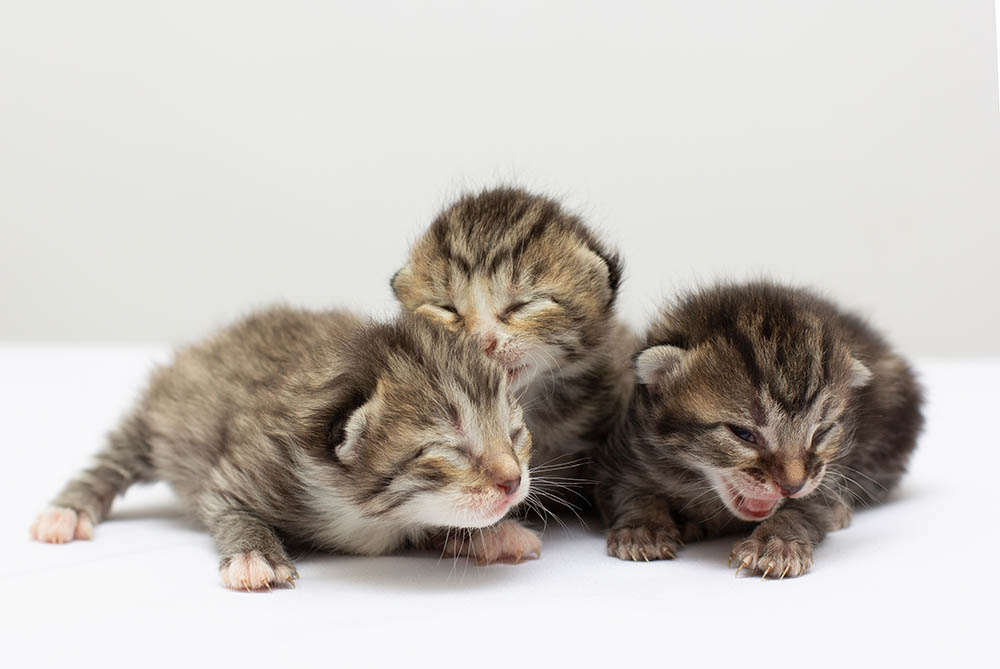
11. The Kitten Loses Their Baby Teeth from 3 Months
Their baby teeth grow between 2–6 weeks: first the incisors, then the fangs and premolars. This is when they begin to eat solid foods as before their tiny sharp teeth could hurt the mother, who pushes them away at around 2 months: this process is called weaning. After that, the baby teeth gradually fall out and are renewed between 3–6 months with, in addition, the appearance of molars in the back of the mouth. Finally, around 6 months, they have their 30 permanent teeth.
12. The Kitten’s Hair Thickens Slowly
From 3 months, the kitten’s baby coat is slowly replaced by a denser and fuller coat. But depending on their breed, the color of the coat may still change for several months, after a few molts.
13. The Kitten Becomes More Agile Between 3–6 Months
Now more autonomous, the kitten is interested in games, such as chases, mock fights, manipulations of objects, etc. They multiply the experiences because these allow them to improve their predatory skills and strengthen the control of the muscles and joints.
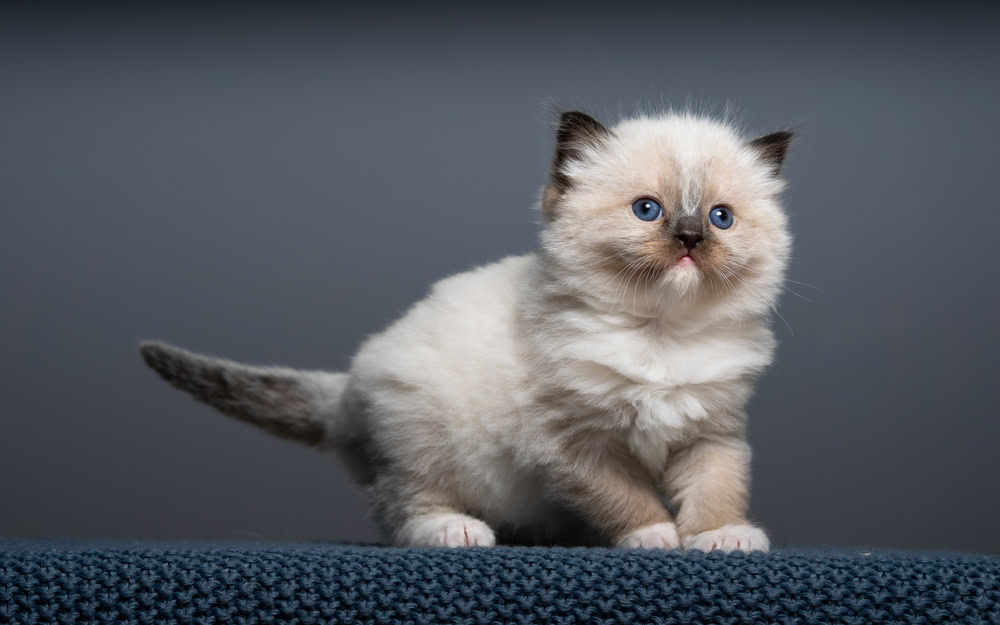
14. The Kitten Puberty Appears Around 6 Months
With the appearance of the first heat in the female and urine marking in the male, the kitten enters the phase of adolescence and puberty. They are not yet an adult, but they are physiologically capable of reproducing, and the female can get pregnant.
15. The Kitten Remains a Junior For the First 2 Years
The kitten’s physical, emotional, and psychological development ends on average around 18 to 24 months, depending on the breed. But there are always exceptions that vary with the cat’s size: a Siamese, relatively small, becomes an adult long before a very large Maine Coon, which does not finish growing until 2 or 3 years old! Still, cats up to 2 years of age are considered juniors, while they become adults from 3 years of age.

What Is the Appropriate Age to Adopt a Kitten?
In the past, there seemed to be a consensus on the age of separation of kittens from their mothers: 8 weeks. So, you could adopt a kitten as young as 2 months old. However, it now appears that the separation age would benefit from being delayed to around 12-14 weeks, or 3-3.5 months in some cases.
At least, this is the finding of a large study carried out at the Department of Veterinary Biosciences at the University of Helsinki and published in the prestigious magazine Nature. Researchers studied no less than 5,726 domestic cats from 40 different breeds and living in a family environment using a questionnaire sent to owners. Here’s what they found:
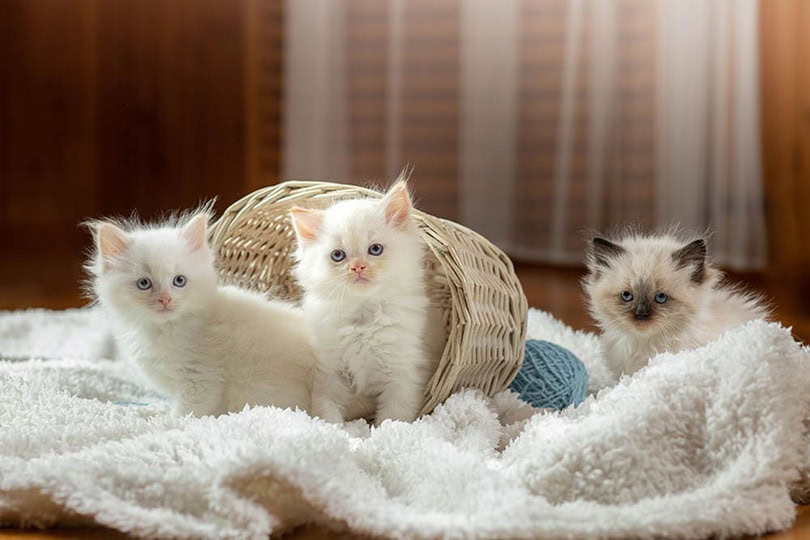
Aggressiveness
The results showed that kittens separated before 8 weeks tend to exhibit more aggressive behavior towards family members in adulthood than those separated later from their mother. On the other hand, they would not necessarily be more fearful. The age of separation from mother and siblings would not influence the tendency to approach a stranger. Still, a kitten separated early could be at a higher risk of attacking this stranger.
If your kitten is showing signs of aggressive behavior, we suggest speaking with one of our vets for additional support and advice.
Stereotypic Behavior Patterns
According to the study, kittens separated later, after the 14th week, are less likely to develop stereotypic behaviors such as excessive grooming and repeated sucking. In addition, these late weaned cats would also tend to be less afraid of new objects in their environment and develop fewer behavioral problems.
Happier Cats and Owners
Behavioral problems in cats are common and are often the source of abandonment or euthanasia. So, how to increase the well-being of cats in general and reduce reported behavioral issues? Perhaps weaning the kittens later would indeed be an easy solution! After all, by observing the behaviors of “wild” kittens, we realize that they tend to stay with their mother and siblings until they are 4 months old, despite being weaned from milk earlier. Thus, many behaviorists and breeders believe that late weaning should be part of the new mores with kittens whenever possible.
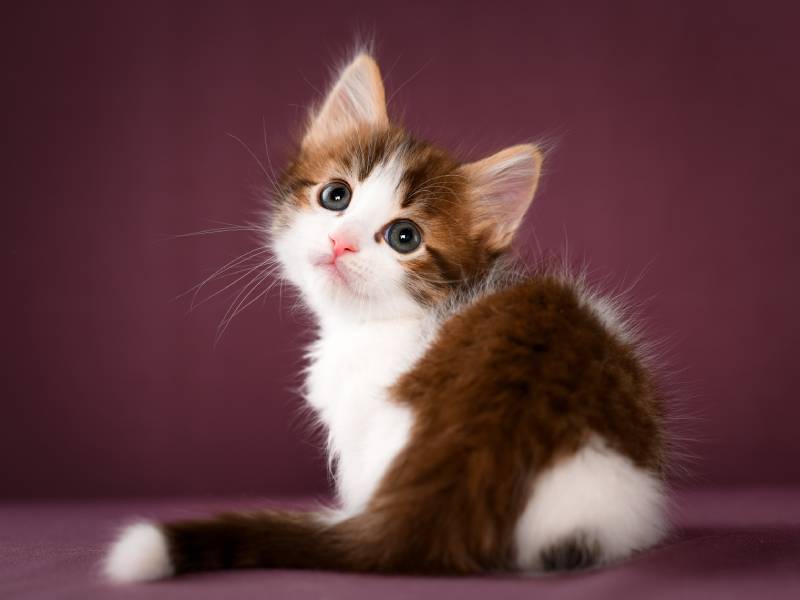

Final Thoughts
Now that you know a little more about the development of kittens and, among other things, the age at which they open their eyes, you will be in a better position to take care of one of these furry little treasures!
- Early weaning increases aggression and stereotypic behaviour in cats – PMC
- Newborn Kittens: Eyes & Walking | Los Angeles Vets
- When Do Kittens Open Their Eyes? | PetMD
- 10 Interesting Facts About Newborn Kittens | PetMD
- Colostrum | VCA Animal Hospitals
- Caring for Kittens from Birth to Eight Weeks UC Davis Korat Shelter Medicine
- Raising a Kitten: A Guide for the First Year | New Hope vets
- How To Litter Train a Kitten | PetMD
- Kitten Teething Complete Guide: Signs, Symptoms & How to Help – Greencross Vets
- Cat care by life stage
- How old should a kitten be before they are adopted/purchased?
Featured Image Credit: Joy Baldassarre, Shutterstock
